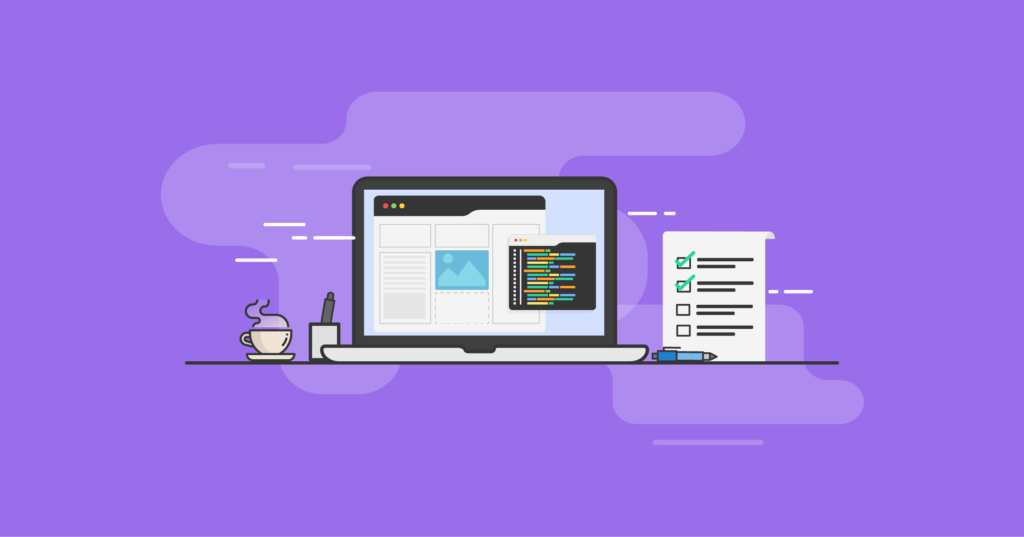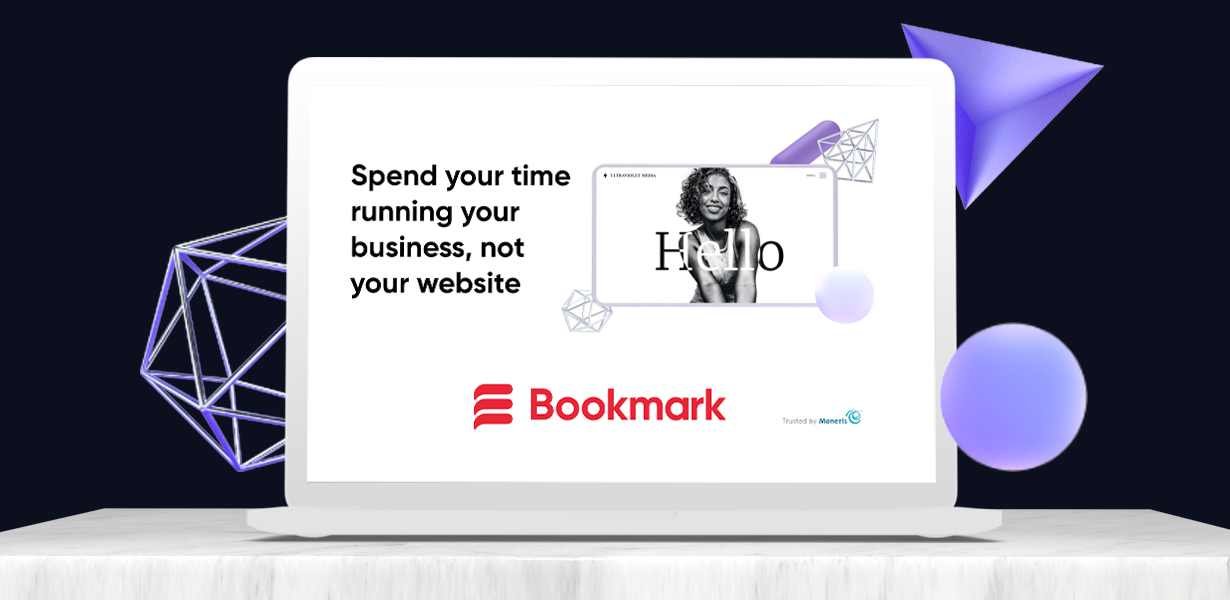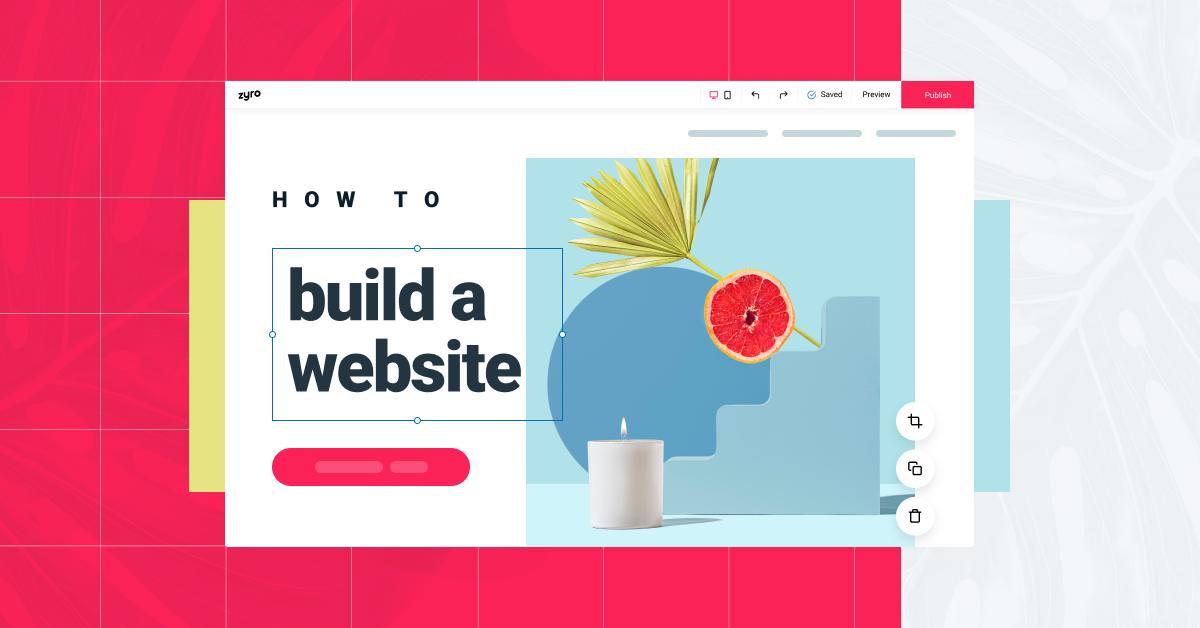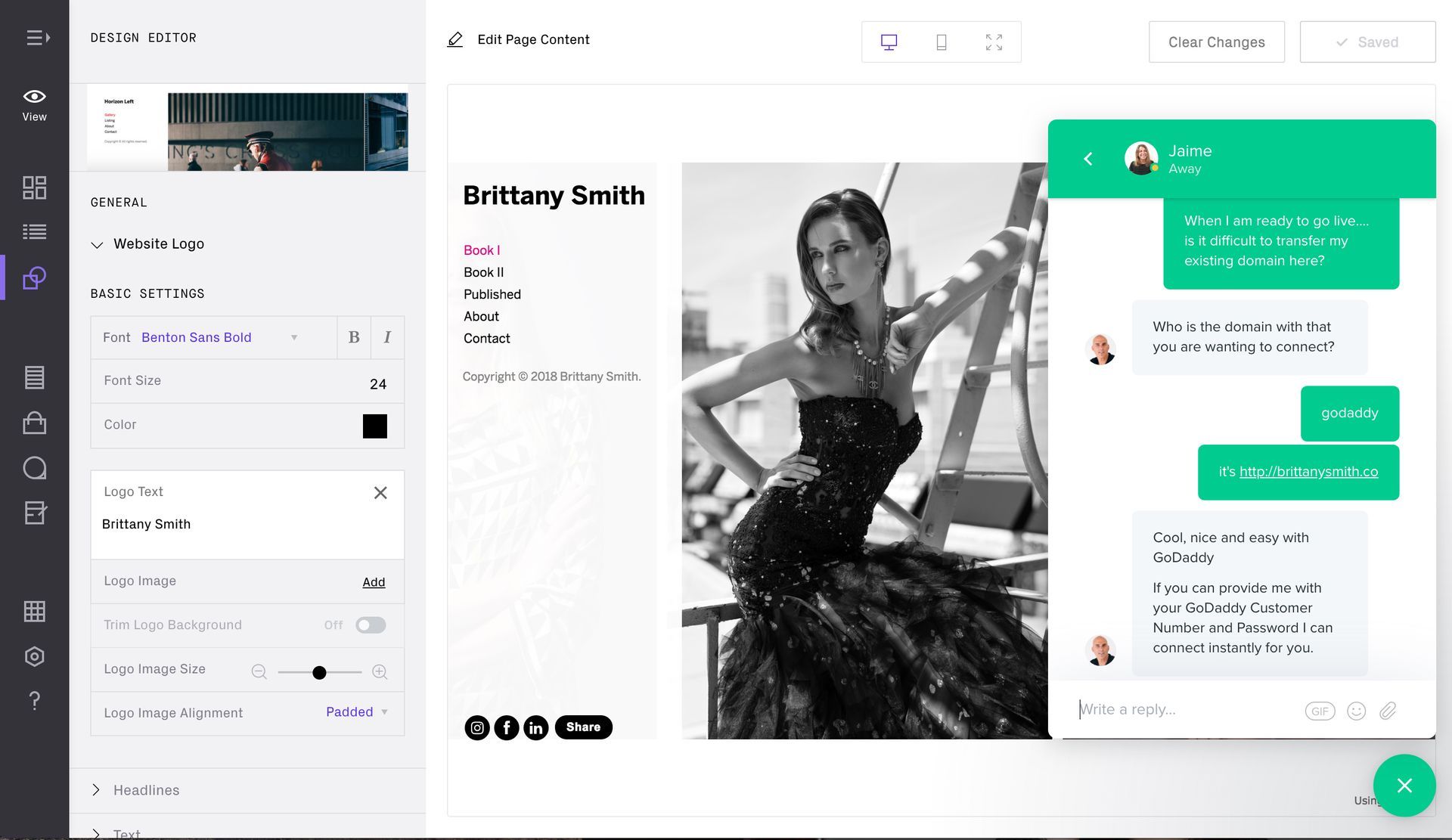8 Minute Read
Web Design Tools and Software
Your Essential Toolkit
Web design covers a variety of skill sets such as coding and graphic design to name a few. As a web designer or business owner seeking to design your own website, you'll need several different tools (software) to save time.
In this guide, I'll briefly talk about graphic design tools for creating website visuals and web development tools for building and coding websites while focusing on the key benefits. Please note that the list is not exhaustive, and there are many other tools available in the market. The choice of tool depends on your specific needs and preferences.
Now, let's delve into each of these tools and discuss their benefits!

Table of Contents
- Graphic Design Tools
- Typography Tools
- Web Development Tools
- Wireframing and Prototyping Tools
- Content Management Systems (CMS)
- SEO Tools
- Testing and Debugging Tools
- Collaboration and Project Management Tools
- User-Centered Design Testing Tools
- A/B Testing Tools

Graphic Design Tools
The following image and graphic design tools can really speed up the design process and help you make the best color selections for your website:
Sketch: Benefits
- Mac-exclusive vector design tool tailored for web and app design.
- User-friendly interface and intuitive controls.
- Extensive library of plugins and integrations.
- Excellent for creating vector-based icons and assets.
- Strong community support with various plugins.
Figma: Benefits
- Web-based collaborative design tool, making it accessible from anywhere.
- Real-time collaboration with multiple team members.
- Prototyping and design tools in one platform.
- Responsive design capabilities.
- Version control for design files.
Adobe Photoshop: Benefits
- Versatile tool for image editing, graphics creation, and web design.
- Extensive set of features for graphic manipulation.
- Widely used for photo editing and creating web graphics.
- Integration with other Adobe software for a seamless workflow.
- Provides various export options for web use.
Canva: Benefits
- User-friendly web-based design tool suitable for beginners.
- Offers pre-made templates for social media, web banners, and more.
- Easy drag-and-drop interface.
- Collaboration and sharing features.
- Useful for quick and simple web graphics.
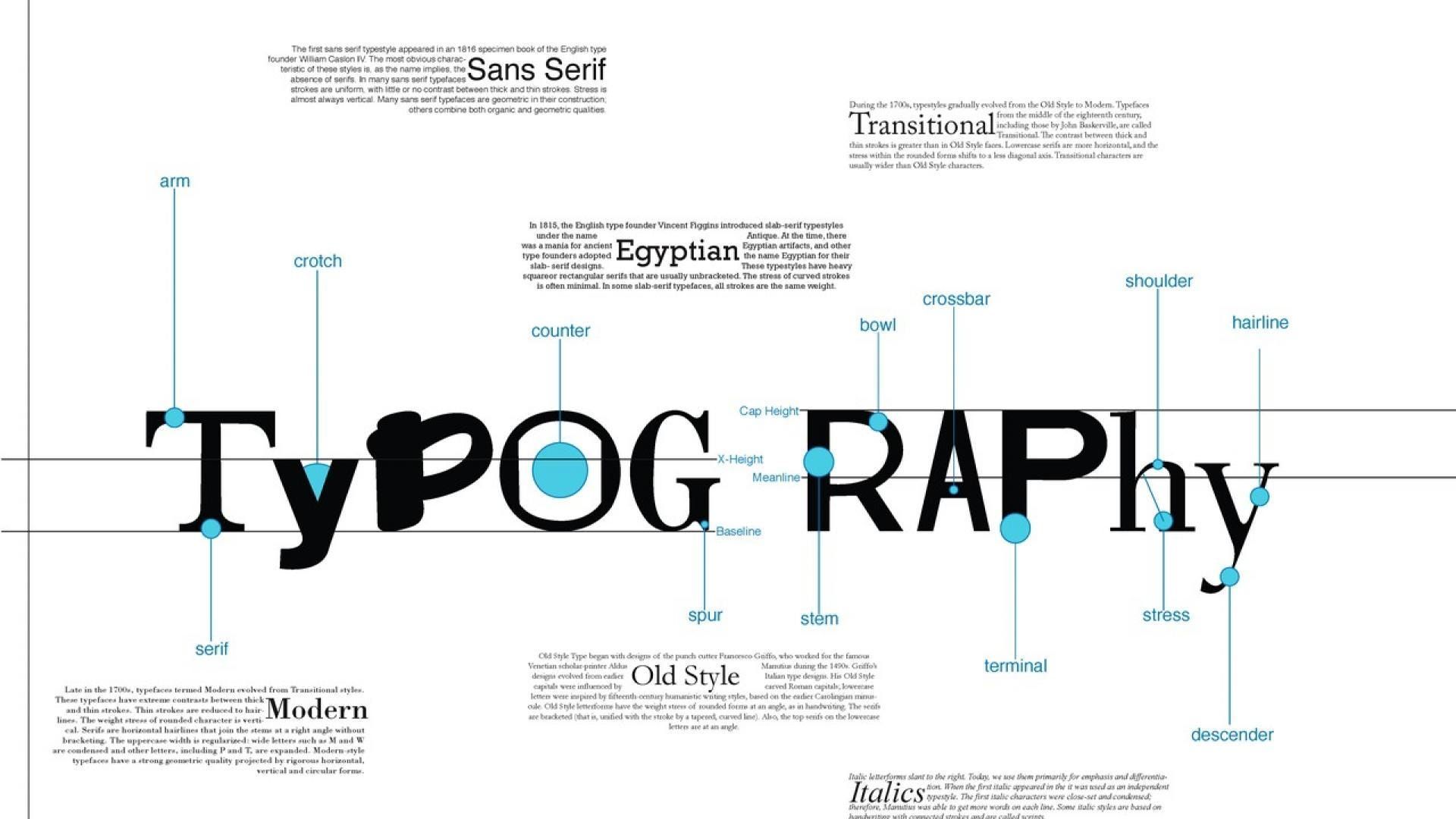
Typography Tools
These typography tools will come in hand when choosing the types of fonts you want to use on your website:
Google Fonts: Benefits
- A vast collection of free, open-source fonts.
- Easy integration into web projects via CSS or JavaScript.
- Detailed font information and customization options.
- Supports multiple languages and scripts.
- Real-time font pairings and suggestions.
Adobe Fonts (formerly Typekit): Benefits
- Part of the Adobe Creative Cloud, providing access to high-quality fonts.
- Simple integration with Adobe software and web projects.
- Licensing options for various uses, including web.
- Extensive library of fonts for creative professionals.
- Allows for syncing fonts to desktop applications.
Font Squirrel: Benefits
- A collection of high-quality, free fonts for commercial use.
- Offers web font generator for converting fonts to web formats.
- Font identifier tool for recognizing fonts used on websites.
- Useful for finding and downloading web-ready fonts.
Typewolf: Benefits
- Curated collection of font recommendations for web design.
- Provides font pairing examples from popular websites.
- Features "Site of the Day" showcasing typography in web design.
- A valuable resource for inspiration and font selection.
Type Scale: Benefits
- A web tool for visualizing font combinations and scales.
- Allows you to experiment with font sizes, line heights, and ratios.
- Provides a real-time preview of text in different typefaces.
- Helps designers create harmonious typographic systems.
Fontjoy: Benefits
- An AI-driven tool for generating font pairings.
- Provides font combinations based on a single typeface.
- Offers customization options for fine-tuning pairings.
- Useful for discovering complementary fonts.
FontPair: Benefits
- A simple online tool for exploring Google Fonts combinations.
- Presents pre-designed font pairings with CSS code.
- Helps designers quickly find appealing font duos.
- A handy resource for web designers using Google Fonts.
Font Awesome: Benefits
- A popular icon and font toolkit.
- Provides scalable vector icons for use in web projects.
- Supports customization and integration with CSS.
- Useful for adding icons and symbols to web designs.
FontBase: Benefits
- A free, cross-platform font manager for designers.
- Allows you to organize, preview, and activate fonts.
- Supports Google Fonts, Adobe Fonts, and local fonts.
- Provides a distraction-free workspace for typography.
WhatTheFont by MyFonts: Benefits
- A font recognition tool for identifying fonts from images.
- Upload or input an image with text, and it suggests matching fonts.
- Useful for discovering fonts used in logos, images, or web designs.
- Helps in sourcing and matching specific typefaces.

Web Development Tools
Web development tools can be extremely helpful, however it is important to take a mobile first design approach to building a website. Here are a few web development tools to help you get started:
Visual Studio Code: Benefits
- Free, open-source code editor from Microsoft.
- Lightweight and highly customizable with extensions.
- Excellent support for web development languages like HTML, CSS, and JavaScript.
- Integrated Git support for version control.
- Strong community and plugin support.
Sublime Text: Benefits
- Lightweight and fast text editor.
- Supports multiple programming languages.
- Extensible via plugins and themes.
- Offers a distraction-free writing mode.
- Cross-platform compatibility.
Atom: Benefits
- Free and open-source text editor developed by GitHub.
- Highly customizable and extensible through packages.
- Git integration and GitHub desktop integration.
- Smart autocompletion and code navigation.
- Cross-platform support.
Brackets: Benefits
- Open-source code editor tailored for web development.
- Live preview feature for real-time code testing.
- Inline editing and preprocessor support (e.g., LESS and SASS).
- Extensible through extensions.
- Lightweight and fast.
Webflow: Benefits
- Web design and development platform with a visual, no-code approach.
- Allows designers to build websites without writing code.
- Responsive design and interactive animations.
- Hosting and CMS capabilities.
- Export code for further customization if needed.
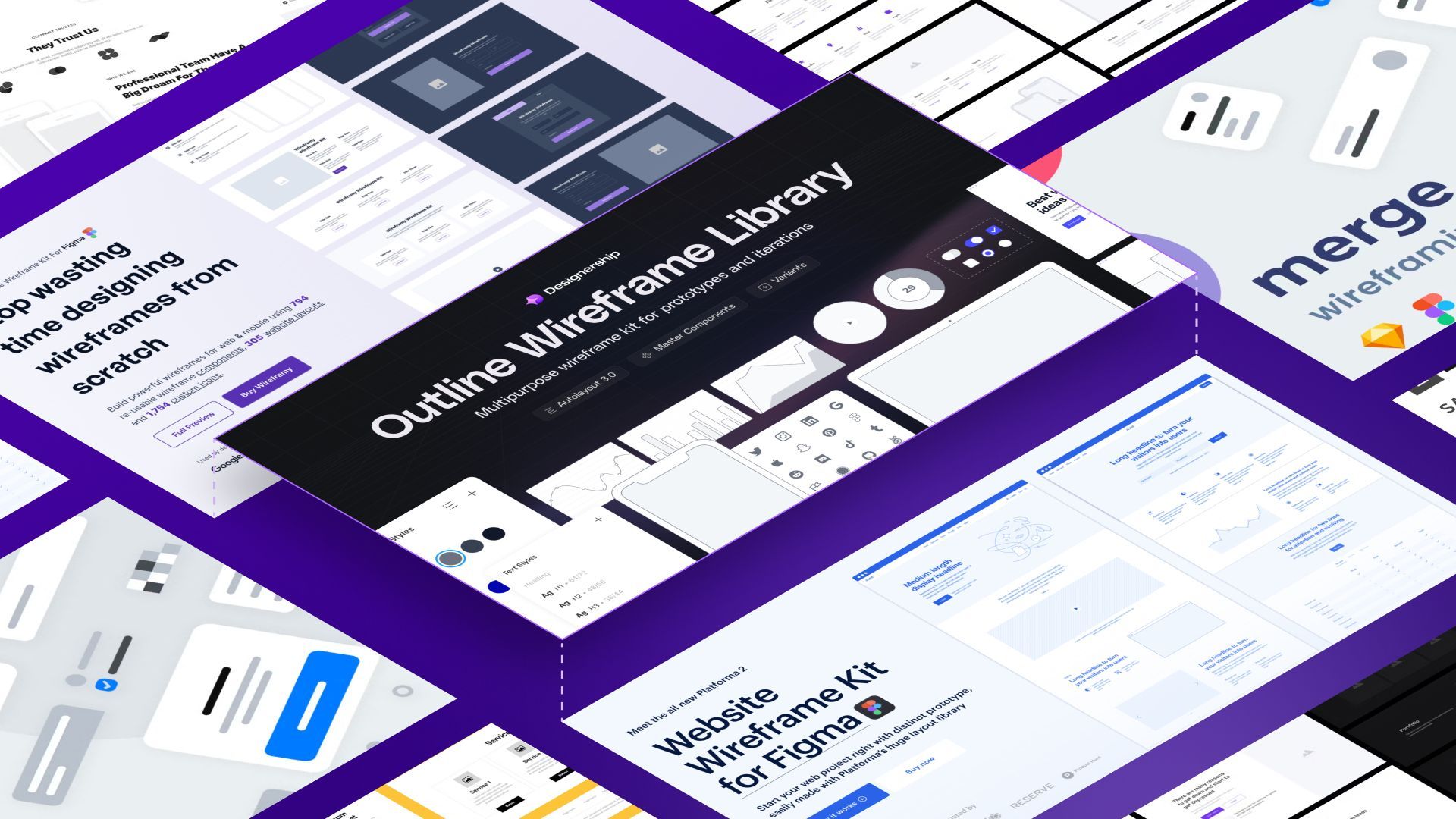
Wireframing and Prototyping Tools
The following tools will help you to discover the best layout design for your website and assist you in creating a visual hierarchy:
Balsamiq: Benefits
- Specialized tool for creating wireframes and mockups.
- Low-fidelity design approach to quickly capture ideas.
- Simple drag-and-drop interface.
- Collaboration and sharing features.
- Ideal for early-stage design exploration.
InVision: Benefits
- A prototyping and collaboration platform.
- Create interactive and animated prototypes.
- Real-time collaboration with stakeholders.
- Design feedback and commenting features.
- Integrations with popular design tools.
Axure RP: Benefits
- Advanced wireframing and prototyping tool.
- Supports complex interactions and dynamic content.
- Conditional logic for realistic user flows.
- Collaboration and sharing capabilities.
- Ideal for creating high-fidelity prototypes.
Sketch: Benefits
- Mentioned earlier as a graphic design tool, Sketch also offers powerful prototyping features.
- Seamless transition from design to prototyping.
- Integrates with other design tools.
- Excellent for creating interactive interfaces.
Marvel: Benefits
- User-friendly prototyping tool for web and mobile apps.
- Quick and simple to create interactive prototypes.
- Collaboration and user testing features.
- Integrates with design tools like Sketch and Figma.
- Good for rapid prototyping.
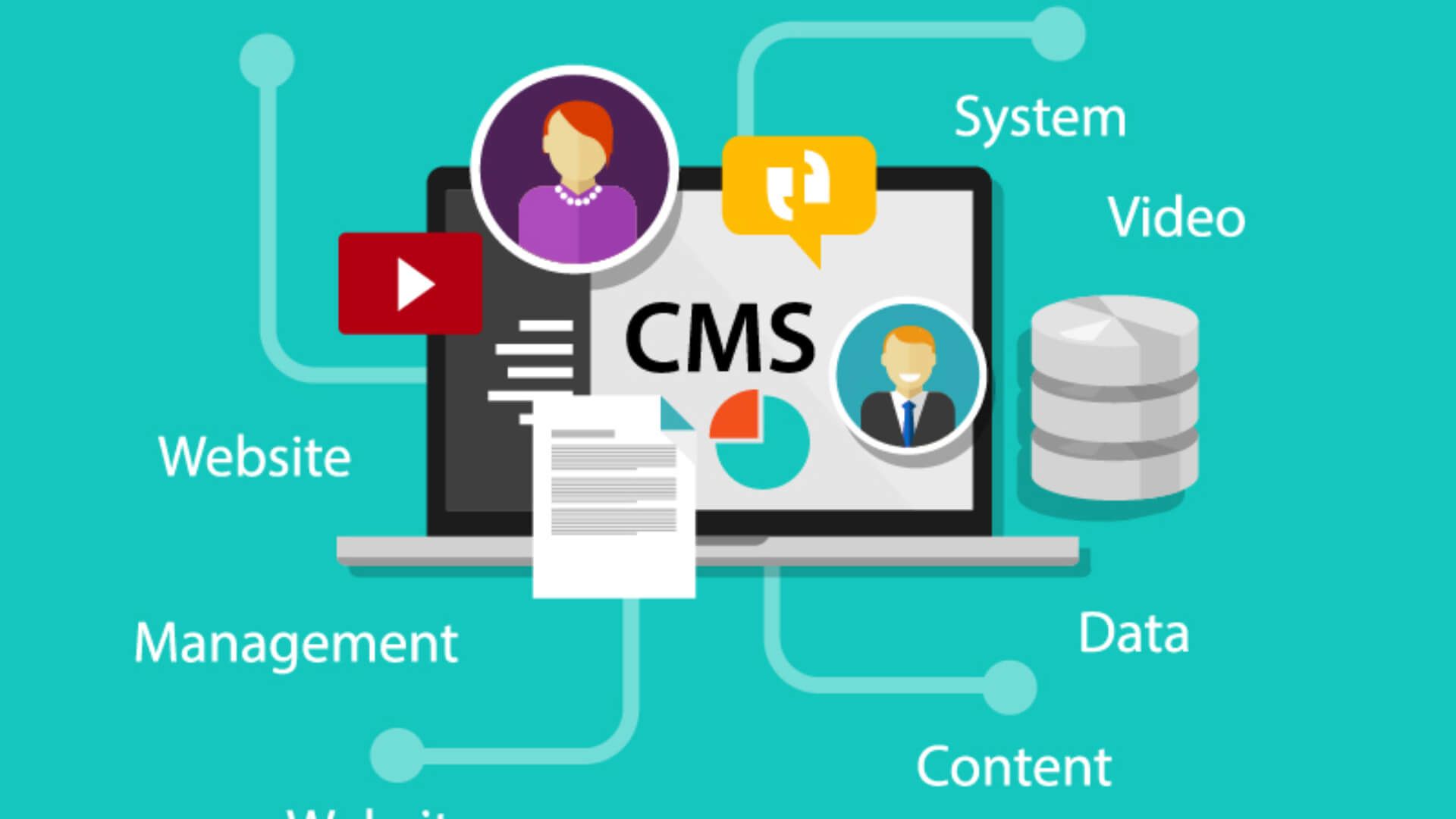
Content Management Systems (CMS)
Before you dive into a content management system (CMS) and building your website, I encourage you to read the following articles:
- Web Design and Branding: Consistency and Recognition
- Web Design Psychology: Understanding User Behavior
- Web Design Case Studies: Real-World Examples
Here are some CMS you can use to get started on your journey to building a website:
WordPress: Benefits
- The most popular open-source CMS, powering a significant portion of websites on the internet.
- Extensive theme and plugin ecosystem for customization.
- User-friendly and suitable for various types of websites.
- Strong community support.
- Regular updates and security patches.
Joomla: Benefits
- Open-source CMS known for its flexibility.
- Suitable for building more complex websites.
- Offers a range of templates and extensions.
- Strong user and developer communities.
- Regular updates and security measures.
Drupal: Benefits
- Powerful open-source CMS for complex and scalable websites.
- Highly customizable with advanced features.
- Suitable for enterprises and organizations.
- Strong security features.
- Extensive developer community.
Wix: Benefits
- User-friendly website builder with a drag-and-drop interface.
- Suitable for small businesses and personal websites.
- Hosting and domain services included.
- Hundreds of templates available.
- No coding skills required.
Squarespace: Benefits
- All-in-one website builder and hosting platform.
- Beautiful, design-focused templates.
- User-friendly for beginners.
- E-commerce features for online stores.
- Good customer support and maintenance.
Ghost: Benefits
- Blogging platform designed for content creators.
- Clean and minimalistic design.
- Suitable for bloggers and writers.
- Hosting services provided.
- No need for self-hosting or maintenance.
Note: These CMS are relatively decent platforms. They have templates based around the latest web design trends and they can help you design and launch a website fast. However, each of these CMS's come with their own set of challenges.
Many of these can become script heavy if you add to many plugins or add-ons, which will negatively impact pagespeed and load time. Your best bet is to talk to a professional web design company to determine which one is best for you or if you should use another platform not listed here.

SEO Tools
Here are some helpful SEO tools:
Google Analytics: Benefits
- Free web analytics service from Google.
- Provides detailed insights into website traffic and user behavior.
- Tracks conversions, user demographics, and more.
- Helps optimize content and marketing strategies.
- Integration with other Google services.
Moz Pro: Benefits
- SEO software suite with a range of tools.
- Keyword research and rank tracking.
- Site auditing and on-page optimization suggestions.
- Backlink analysis and link building.
- Competitive analysis and reporting.
Ahrefs: Benefits
- Comprehensive SEO toolset for keyword research and competitive analysis.
- Backlink analysis and site audit features.
- Rank tracking and content research.
- Helps improve organic search rankings.
- Extensive database of keywords and backlinks.
SEMrush: Benefits
- SEO and digital marketing tool with multiple features.
- Keyword research, competitive analysis, and rank tracking.
- Site audit and backlink analysis.
- Content optimization recommendations.
- PPC advertising data and social media analysis.
Screaming Frog SEO Spider: Benefits
- Web crawling tool for analyzing on-page SEO.
- Crawls websites and provides detailed reports.
- Identifies issues like broken links and duplicate content.
- Excellent for technical SEO auditing.
- Available in both free and paid versions.
Ubersuggest: Benefits
- SEO and digital marketing tool with multiple features.
- Keyword research, competitive analysis, and rank tracking.
- Site audit and backlink analysis.
- Content optimization recommendations.

Testing and Debugging Tools
Browser Developer Tools: Benefits
- Built-in debugging tools in web browsers like Chrome, Firefox, and Edge.
- Inspect and edit HTML, CSS, and JavaScript in real-time.
- Debug and profile website performance.
- Test responsive design and mobile emulation.
- Essential for web development and troubleshooting.
CrossBrowserTesting: Benefits
- Cloud-based testing platform for cross-browser compatibility.
- Provides access to various real browsers and devices.
- Test websites on different platforms and screen sizes.
- Automated and manual testing options.
- Screenshots and debugging tools.
BrowserStack: Benefits
- Cloud-based testing platform for cross-browser and mobile testing.
- Access to real devices and browsers.
- Test websites and apps on various configurations.
- Live testing and automated testing suites.
- Integrates with popular development tools.
LambdaTest: Benefits
- Cross-browser testing platform with a cloud infrastructure.
- Test websites and web apps on real browsers and operating systems.
- Live interactive testing and automated testing.
- Integrated debugging tools.
- Supports continuous integration and collaboration.
Pingdom: Benefits
- Website monitoring and performance testing tool.
- Measures website speed and uptime.
- Provides insights into page load times and performance bottlenecks.
- Alerts and reports for website health. - Helps optimize site performance.

Collaboration and Project Management Tools
Trello: Benefits
- Kanban-style project management tool.
- Organize tasks into boards, lists, and cards.
- Collaborate with team members and assign tasks.
- Customize workflows and integrate with other tools.
- Suitable for web design project management.
Asana: Benefits
- Task and project management platform.
- Create and assign tasks, set deadlines, and track progress.
- Collaboration features and project timelines.
- Integrations with various apps and tools.
- Useful for managing web design projects and tasks.
Slack: Benefits
- Team communication and collaboration platform.
- Real-time messaging, channels, and file sharing.
- Integrates with various productivity and project management tools.
- Suitable for quick communication within web design teams.
- Reduces email clutter.
JIRA: Benefits
- Project and issue tracking tool by Atlassian.
- Agile project management and issue tracking.
- Customizable workflows and project boards.
- Integrates with development and design tools.
- Suitable for larger web development projects.
Basecamp: Benefits
- Project management and team collaboration tool.
- To-do lists, file sharing, and message boards.
- Simplified project communication.
- Centralized project information.
- Suitable for smaller web design teams and projects.

User-Centered Design Testing Tools
These user-centered design tools help designers and developers gather feedback from users, analyze user behavior, and make data-driven design decisions to improve the user experience of their websites or applications.
UsabilityHub: Benefits
- A platform for running quick usability tests.
- Allows you to create tests for websites, prototypes, and design concepts.
- Provides tools for preference testing, click tests, and navigation tests.
- Offers valuable insights into user behavior and preferences.
UserTesting: Benefits
- A comprehensive user research platform.
- Enables remote user testing with participants from around the world.
- Provides video recordings, heatmaps, and surveys for in-depth insights.
- Ideal for understanding how users interact with your website or app.
Optimal Workshop: Benefits
- Specializes in information architecture and usability testing.
- Offers tools like Treejack for testing website navigation.
- Provides card sorting and first-click testing capabilities.
- Ideal for improving the organization and structure of your site.
Crazy Egg: Benefits
- A heatmap and user behavior tracking tool.
- Generates heatmaps, scrollmaps, and overlay reports.
- Helps identify where users click, how far they scroll, and what interests them.
- Useful for optimizing the layout and content of your web pages.
Lookback: Benefits
- A user research platform for live or recorded user testing sessions.
- Allows you to interact with users in real-time or review recorded sessions.
- Offers insights into user behavior, thoughts, and emotions.
- Ideal for gaining a deep understanding of the user experience.
Hotjar: Benefits
- Combines heatmaps, session recording, and user feedback tools.
- Tracks user interactions with your website.
- Offers feedback widgets to collect user opinions.
- Useful for improving conversion rates and user engagement.
UserZoom: Benefits
- An all-in-one UX research platform.
- Offers various user research methods, including remote usability testing.
- Provides tools for surveys, card sorting, and tree testing.
- Ideal for comprehensive UX research and testing.
Maze: Benefits
- A user testing and usability testing platform.
- Enables rapid testing of prototypes and design concepts.
- Offers user insights, click and navigation analysis.
- Ideal for validating design decisions before development.
Userlytics: Benefits
- A user testing platform with a focus on remote testing.
- Offers video recordings of user sessions.
- Supports both moderated and unmoderated testing.
- Useful for gathering feedback on websites and apps from various demographics.

A/B Testing Tools
Here are some useful A/B testing tools to get you started:
Optimizely: Benefits
- A popular A/B testing and experimentation platform.
- Provides a visual editor for creating experiments.
- Allows for testing on web and mobile apps.
- Supports advanced targeting and personalization.
- Ideal for large enterprises and teams focused on experimentation.
VWO (Visual Website Optimizer): Benefits
- A comprehensive optimization and A/B testing platform.
- Offers a visual editor for designing experiments.
- Includes heatmaps, session recordings, and on-page surveys.
- Suitable for A/B testing, multivariate testing, and split URL testing.
Unbounce: Benefits
- A landing page builder with built-in A/B testing.
- Ideal for creating and testing landing pages for marketing campaigns.
- Offers a drag-and-drop builder and dynamic text replacement.
- Helps optimize landing pages for conversion.
Crazy Egg: Benefits
- A heatmap and user behavior tracking tool with A/B testing.
- Allows for split testing different webpage versions.
- Provides insights into user interaction and clicks.
- Useful for optimizing webpage design and content.
Convert: Benefits
- An A/B testing and personalization platform.
- Offers a visual editor and a full-stack testing option.
- Includes segmentation and targeting features.
- Ideal for mid-sized businesses and marketing teams.
Split.io: Benefits
- A feature flagging and experimentation platform.
- Enables A/B testing and feature rollout for developers.
- Provides real-time experimentation data.
- Ideal for product teams and developers.
AB Tasty: Benefits
- A user experience optimization platform with A/B testing.
- Offers personalization, split URL testing, and multivariate testing.
- Includes behavioral targeting and segmentation.
- Ideal for optimizing user experiences and conversion rates.
Instapage: Benefits
- A landing page platform with built-in A/B testing.
- Provides drag-and-drop page building and personalization.
- Allows for split testing landing pages and forms.
- Ideal for creating and optimizing campaign-specific landing pages.
Kameleoon: Benefits
- An A/B testing and personalization platform.
- Offers server-side testing and client-side testing.
- Includes AI-powered personalization and targeting.
- Ideal for enterprises and advanced A/B testing needs.


